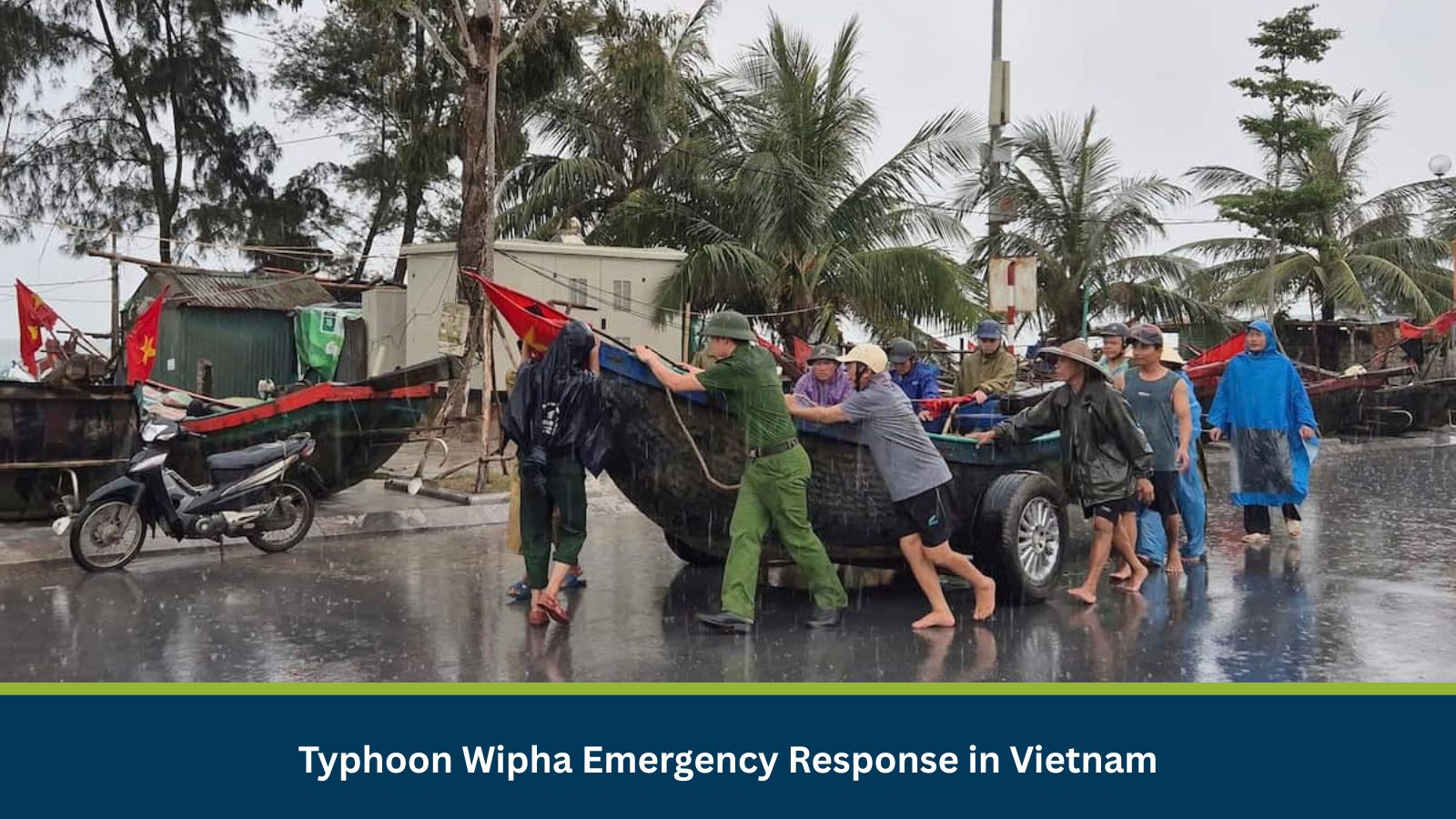This report provides a detailed risk assessment for Typhoon Wipha, which is poised to make landfall across northern and central Vietnam. This analysis supports business continuity, personnel safety, and operational preparedness by evaluating how such natural disaster events impact urban mobility, workplace safety, supply chains, and public services.
What is Risk Analysis in the Context of Natural Disaster Events?
Natural disaster risk assessments evaluate how events like typhoons and floods impact human safety, urban mobility, and critical infrastructure. They enable businesses to prepare for disruptions, mitigate operational risks, and ensure staff welfare through timely intelligence.
Executive Summary
- Date of Incident: 21 July 2025
- Location: Hanoi, Ho Chi Minh, Quang Ninh, Thua Thien Hue, Vietnam
- Risk Category: Natural Disasters
- Severity Score: 4/5
- Confidence Level: 90%
Typhoon Wipha is set to make landfall in northern and central Vietnam, prompting a comprehensive emergency response. The primary window for severe weather and direct operational disruption is projected to be 48 to 72 hours following landfall, with cascading effects and recovery efforts extending over the subsequent 5 to 7 days due to potential for extensive flooding, landslides, and infrastructure damage. Given the typhoon’s anticipated strength and the densely populated regions in its path, widespread disruptions to human safety, business operations, and supply chains are highly probable. The severity is assessed as substantial, reflecting the potential for considerable human displacement and significant asset damage.
Known Hotspots and Sensitive Areas
The Red River Delta region, including the capital Hanoi and surrounding provinces like Thai Binh, Nam Dinh, and Ninh Binh, is particularly vulnerable to flooding. Key coastal provinces such as Quang Ninh (home to Ha Long Bay) and Hai Phong (a major port city with Cat Bi Airport) are directly in the typhoon’s path and highly sensitive to storm surge. Further south, the North Central Coast provinces of Thanh Hoa and Nghe An are also at high risk.
Impact on Transportation and Services
- Road Access: National Highway 1A and other provincial roads in provinces like Quang Ninh, Hai Phong, and Thai Binh are highly susceptible to closures due to flooding, debris, and landslides.
- Public Transport: Major airports in northern Vietnam, including Cat Bi International Airport (Hai Phong), Noi Bai International Airport (Hanoi), and Van Don International Airport (Quang Ninh), are highly susceptible to closure or severe operational delays. Rail services may also face delays or cancellations.
- Utility Services: Widespread power outages are anticipated due to downed power lines and damaged infrastructure. Water supply disruptions are also common.
- Business Operations: Business operations are expected to be interrupted due to power outages, transport blockages, and workforce displacement.
Recommended Actions
- Activate mandatory remote work protocols for all non-essential personnel in affected regions. For essential on-site staff, establish and communicate pre-identified safe shelters and evacuation routes.
- Implement immediate asset protection measures at all physical facilities, including securing outdoor equipment and deploying flood barriers.
- Proactively engage supply chain partners and logistics providers to reroute shipments away from high-impact areas.
- Establish a multi-channel communication protocol to inform customers, employees, and stakeholders about potential service disruptions and safety guidelines.
Emergency Contacts
- Police: 113
- Fire Department: 114
- Ambulance: 115
- Ministry of Natural Resources and Environment (MONRE): +84 (024) 37932009
Final Thoughts
The severe risk from Typhoon Wipha necessitates proactive mitigation through remote working, transport support, and ongoing risk monitoring. The typhoon’s potential to trigger catastrophic floods and widespread power grid failure could overwhelm local and national emergency response capabilities, leading to long-term business closures and significant asset losses. Businesses should stay informed, support relief efforts, and adjust response plans as the situation evolves.
Stay ahead of operational risks with real-time alerts, scenario modeling, and expert advisories.
MitKat helps organisations navigate uncertain times by providing comprehensive insights about the evolving risk landscape. We offer various services including Risk consulting and Security Design, Protective Services, and cyber security services which ensure organisations become Risk Intelligent. Our AI-powered operational risk monitoring tool, datasurfr combined with expert insight enables companies to stay abreast of evolving operational risks and emerging developments.






